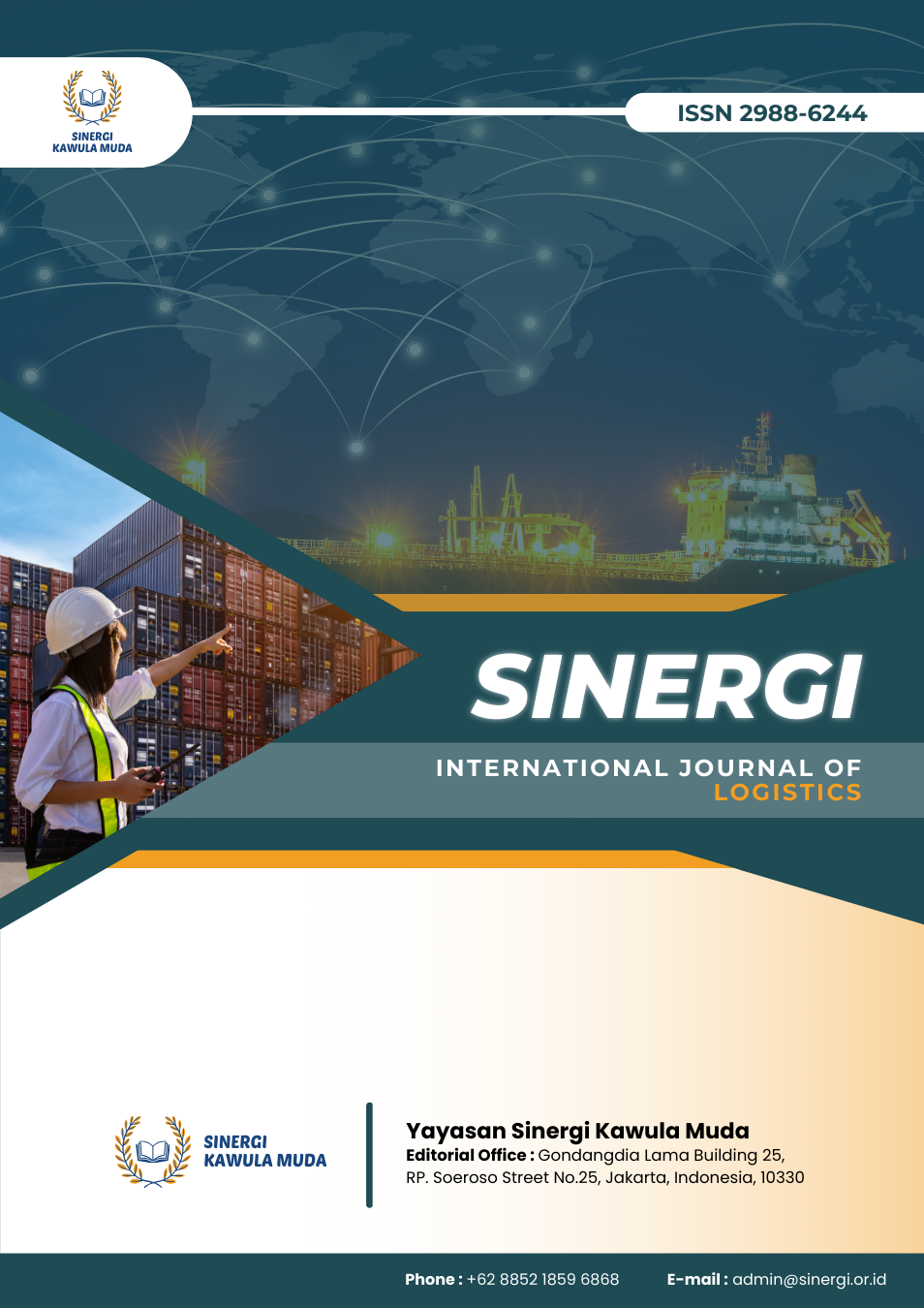Addressing Financial and Regulatory Challenges in Logistics Hub Development
DOI:
https://doi.org/10.61194/sijl.v3i1.736Keywords:
Logistics Hubs, Regional Economic Development, Multimodal Connectivity, Infrastructure Investment, Public-Private Partnerships, Digital Technologies, SustainabilityAbstract
Logistics hubs are integral to regional economic development, offering significant contributions to growth through improved connectivity, trade facilitation, and job creation. This study aims to explore the economic, infrastructural, and governance-related aspects of logistics hubs, synthesizing empirical findings from a wide range of global case studies. Using a systematic review methodology, the study examines the role of multimodal infrastructure, digital technologies, and public-private partnerships in optimizing the performance of logistics hubs. Key findings show that while logistics hubs stimulate economic growth and enhance regional competitiveness, systemic barriers such as regulatory inefficiencies and financial constraints limit their full potential. Additionally, the integration of sustainable practices and social governance is critical for ensuring long-term success. The study highlights the importance of a holistic, cross-sectoral approach to logistics hub development and offers policy recommendations for overcoming existing challenges. Future research should focus on underrepresented regions and adopt interdisciplinary methodologies to address the complex dynamics of logistics hubs in diverse contexts.
References
Bolumole, Y., Closs, D., & Rodammer, F. (2015). The economic development role of regional logistics hubs: a cross‐country study of interorganizational governance models. Journal of Business Logistics, 36(2), 182-198. https://doi.org/10.1111/jbl.12088 DOI: https://doi.org/10.1111/jbl.12088
Bouazza, S., Benmamoun, Z., & Hachimi, H. (2023). Maritime bilateral connectivity analysis for sustainable maritime growth: case of Morocco. Sustainability, 15(6), 4993. https://doi.org/10.3390/su15064993 DOI: https://doi.org/10.3390/su15064993
Chhetri, P., Butcher, T., & Corbitt, B. (2014). Characterising spatial logistics employment clusters. International Journal of Physical Distribution & Logistics Management, 44(3), 221-241. https://doi.org/10.1108/ijpdlm-03-2012-0086 DOI: https://doi.org/10.1108/IJPDLM-03-2012-0086
Hong-chao, D., Lian, M., Chen, X., Liu, J., Zu-chang, Z., Zhang, Y., … & Zhou, M. (2018). Research on the correlation of port logistics and regional economic growth base on gray relational analysis method. Concurrency and Computation Practice and Experience, 31(10). https://doi.org/10.1002/cpe.4744 DOI: https://doi.org/10.1002/cpe.4744
Heddebaut, O. and Ciommo, F. (2017). City-hubs for smarter cities. the case of Lille “Euraflandres” interchange. European Transport Research Review, 10(1). https://doi.org/10.1007/s12544-017-0283-3 DOI: https://doi.org/10.1007/s12544-017-0283-3
Ju, C., Jiang, C., & Ming-yao, C. (2012). Research on logistics network infrastructures based on DEA-PCA approach: evidence from the Yangtze River Delta region in China. Journal of Shanghai Jiaotong University (Science), 17(1), 98-107. https://doi.org/10.1007/s12204-012-1235-7 DOI: https://doi.org/10.1007/s12204-012-1235-7
Lee, P., Hu, Z., Lee, S., Feng, X., & Notteboom, T. (2022). Strategic locations for logistics distribution centers along the Belt and Road: explorative analysis and research agenda. Transport Policy, 116, 24-47. https://doi.org/10.1016/j.tranpol.2021.10.008 DOI: https://doi.org/10.1016/j.tranpol.2021.10.008
Lindsey, C., Mahmassani, H., Mullarkey, M., Nash, T., & Rothberg, S. (2014). Regional logistics hubs, freight activity and industrial space demand: econometric analysis. Research in Transportation Business & Management, 11, 98-104. https://doi.org/10.1016/j.rtbm.2014.06.002 DOI: https://doi.org/10.1016/j.rtbm.2014.06.002
Raimbekov, Z., Syzdykbayeva, B., Баймбетова, А., & Рахметулина, Ж. (2016). Evaluating the impact of logistics infrastructure on the functioning and development of regional economy. Economic Annals-Ххi, 160(7-8), 100-104. https://doi.org/10.21003/ea.v160-20 DOI: https://doi.org/10.21003/ea.V160-20
Scholvin, S., Breul, M., & Diez, J. (2019). Revisiting gateway cities: connecting hubs in global networks to their hinterlands. Urban Geography, 40(9), 1291-1309. https://doi.org/10.1080/02723638.2019.1585137 DOI: https://doi.org/10.1080/02723638.2019.1585137
Slack, B. & Gouvernal, É. (2015). Container transshipment and logistics in the context of urban economic development. Growth and Change, 47(3), 406-415. https://doi.org/10.1111/grow.12132 DOI: https://doi.org/10.1111/grow.12132
Tian, X., Li, S., Ma, Y., Choi, Y., & Lee, H. (2024). Sustainable governance on the Belt and Road initiative toward a carbon-zero, regional, eco-friendly logistics hub: a difference-in-differences perspective. Systems, 12(12), 532. https://doi.org/10.3390/systems12120532 DOI: https://doi.org/10.3390/systems12120532
Zhang, B. (2021). How does transportation hub status promote the urban economic development? — the mediating effect analysis of innovation. E3S Web of Conferences, 275, 03051. https://doi.org/10.1051/e3sconf/202127503051 DOI: https://doi.org/10.1051/e3sconf/202127503051
Lopes, J., Gomes, S., & Mané, L. (2022). Developing knowledge of supply chain resilience in less-developed countries in the pandemic age. Logistics, 6(1), 3. https://doi.org/10.3390/logistics6010003 DOI: https://doi.org/10.3390/logistics6010003
Maceín, J., González-Azcárate, M., Hewitt, R., Hernández-Jiménez, V., & Bardají, I. (2024). COVID and consumers’ food strategies in Madrid, Spain: Towards a resilient city-region food system approach. Heliyon, 10(23), e40565. https://doi.org/10.1016/j.heliyon.2024.e40565 DOI: https://doi.org/10.1016/j.heliyon.2024.e40565
Naim, M., & Gosling, J. (2022). Revisiting the whole systems approach: Designing supply chains in a turbulent world. The International Journal of Logistics Management, 34(1), 5-33. https://doi.org/10.1108/ijlm-02-2021-0121 DOI: https://doi.org/10.1108/IJLM-02-2021-0121
Negesse, A., Woyraw, W., Temesgen, H., Teka, Y., Yismaw, L., Akalu, T., … & Desalegn, B. (2022). Spatial exploration of non-resilience to food insecurity, its association with COVID-19 and household coping strategies in East Gojjam districts, northwest Ethiopia, 2020. Scientific Reports, 12(1). https://doi.org/10.1038/s41598-022-19963-2 DOI: https://doi.org/10.1038/s41598-022-19963-2
Song, M., Ma, X., Zhao, X., & Zhang, L. (2022). How to enhance supply chain resilience: A logistics approach. The International Journal of Logistics Management, 33(4), 1408-1436. https://doi.org/10.1108/ijlm-04-2021-0211 DOI: https://doi.org/10.1108/IJLM-04-2021-0211
Tang, Y., Chau, K., Lau, Y., & Zheng, Z. (2023). Data-intensive inventory forecasting with artificial intelligence models for cross-border e-commerce service automation. Applied Sciences, 13(5), 3051. https://doi.org/10.3390/app13053051 DOI: https://doi.org/10.3390/app13053051
Fan, Z., Chen, Y., & Zhang, H. (2023). Charging strategy optimization and route planning for electric logistics vehicles. Transportation Research Part C: Emerging Technologies, 147, 103984. https://doi.org/10.1016/j.trc.2022.103984 DOI: https://doi.org/10.1016/j.trc.2022.103984
Downloads
Published
How to Cite
Issue
Section
License
Copyright (c) 2025 Hedi Cupiadi, Tutik Siswanti

This work is licensed under a Creative Commons Attribution 4.0 International License.





